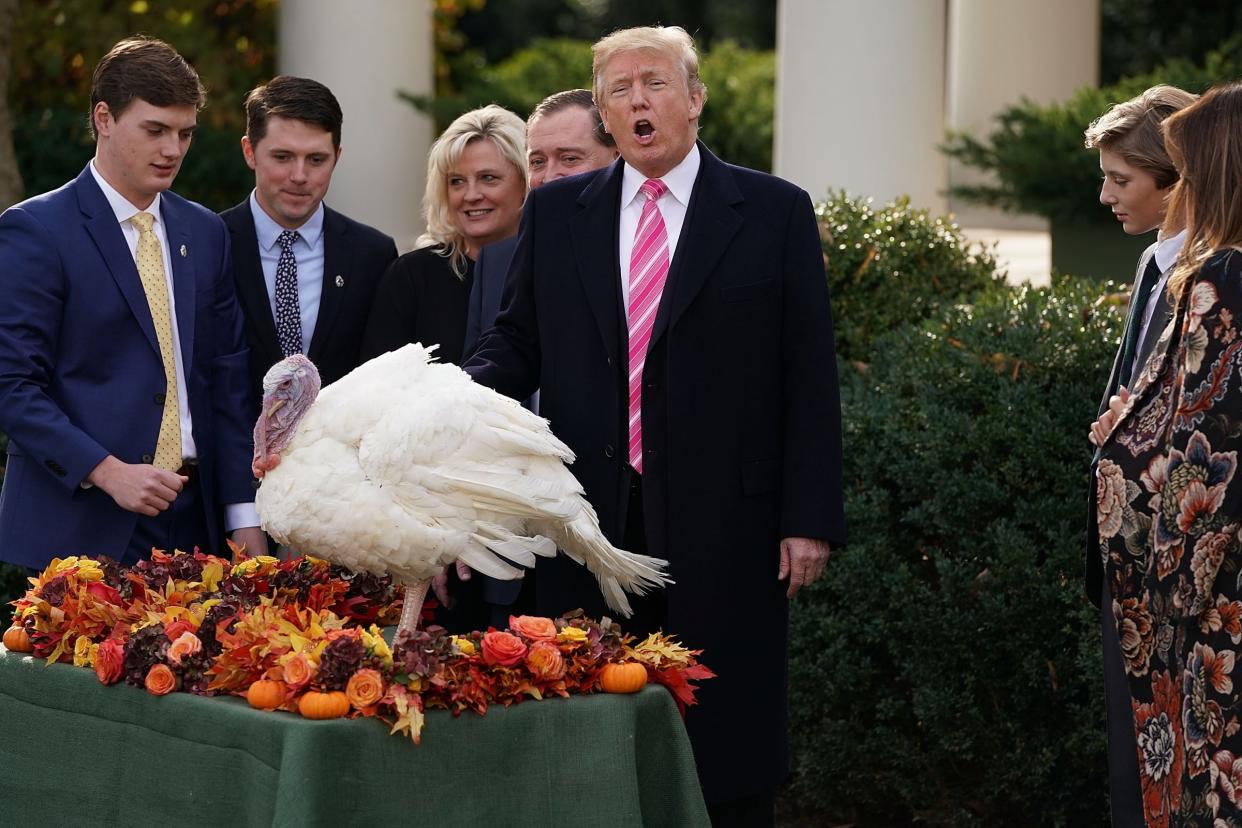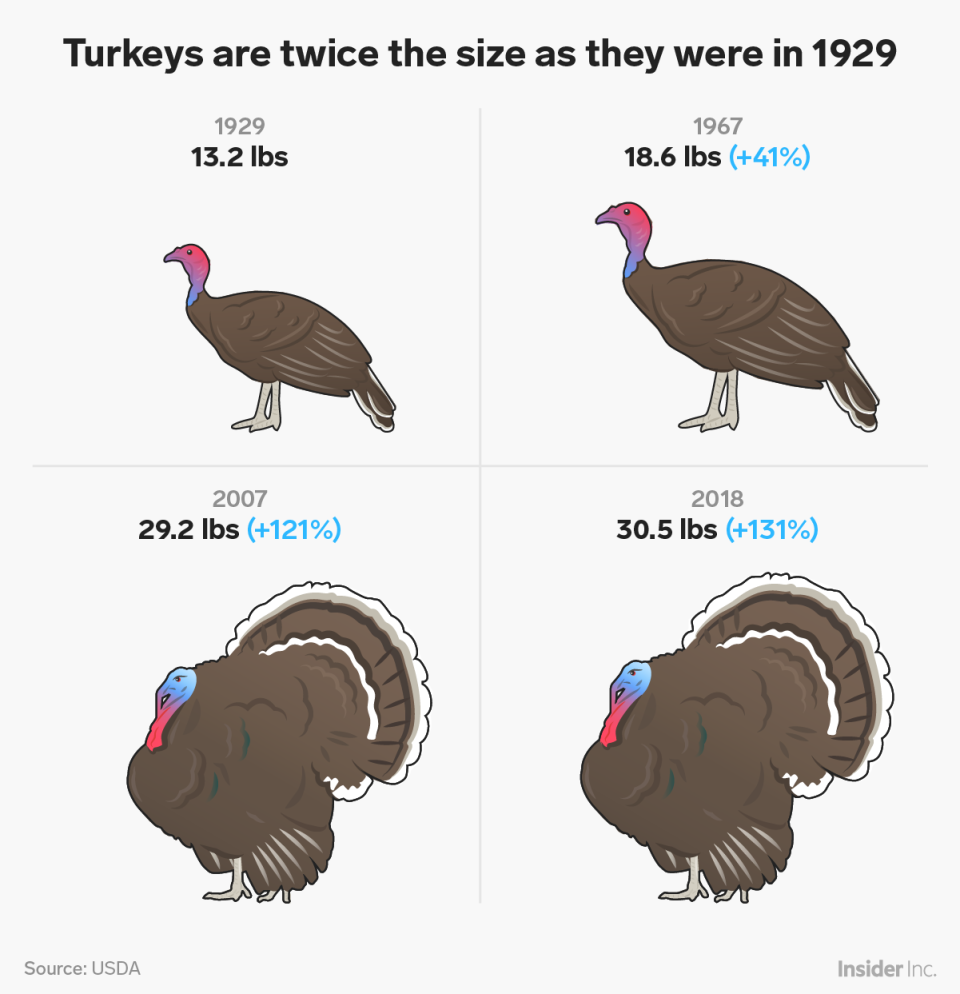The turkey you're about to eat weighs twice as much as it did a few decades ago

Chip Somodevilla/Getty Images
Turkeys have gotten much bigger than they were half a century ago.
To meet growing demand, American turkey farmers began to breed birds for their size and speed of growth in the 1950s.
Today, the average turkey weighs around 30.5 pounds, almost twice as much as it did in the 1960s.
The turkey on your Thanksgiving table this week probably won't look anything like it would have decades ago.
Today's turkeys are a lot bigger — more than double the size — and faster-growing than the birds our parents or grandparents ate.
For reference, here's the turkey that President John F. Kennedy pardoned in 1963, compared to the 39-pound bird named Peas that President Donald Trump pardoned 55 years later:

John F. Kennedy Presidential Library/NARA; Chip Somodevilla/Getty Images
That's a big bird.
Breeding larger turkeys
Demand for turkey is greater than ever. Americans consumed 16 pounds of turkey per person in 2014, and turkey consumption has increased by more than 110% since 1970, according to the National Turkey Federation.
Until the 1950s, farmed turkeys were pretty much the same size as wild ones. But to meet growing demand, American turkey farmers began to breed birds for their size and their speed of growth, according to Mother Jones.
Since 2012, turkeys have weighed roughly 30 pounds.

Samantha Lee/Business Insider
The trouble with bigger birds
That increased size has led to fewer turkeys getting slaughtered. According to a USDA report, 232 million turkeys were slaughtered in 2015, down from a peak of 293 million turkeys in 1996.
The consequence of this change, however, is that male turkeys have grown so heavy that they can no longer mate with hens. For this and other reasons, most of today's turkeys are bred through artificial insemination.
Today, USDA regulations prevent turkey farmers from giving turkeys hormones. As of January 2017, US farmers are not allowed to use antibiotics for growth purposes, either. Giving the animals doses to prevent disease is still allowed, but require a veterinarian to sign off.
So as you enjoy your big turkey, just remember that it isn't your grandma's Thanksgiving bird.
Tanya Lewis contributed to an earlier version of this post, which has been updated from a 2016 version.
NOW WATCH: You've been cooking your turkey all wrong — here's how to do it in 90 minutes flat
See Also:

 Yahoo News
Yahoo News 

